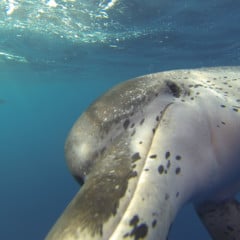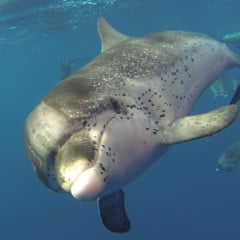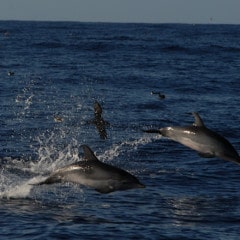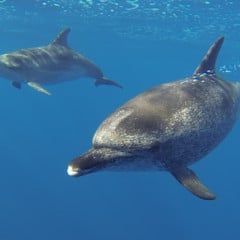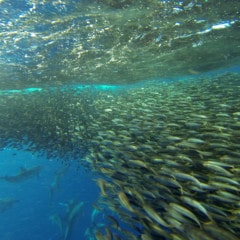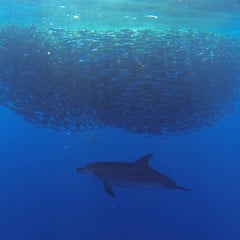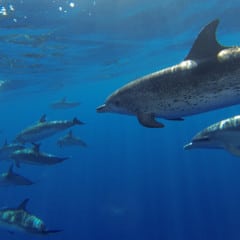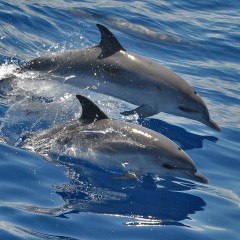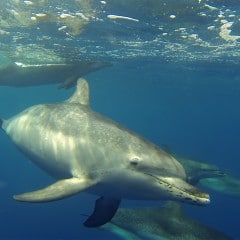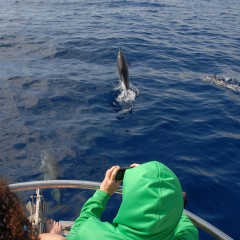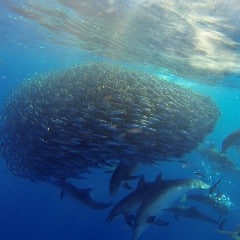Spotted dolphins are small, very playful animals that follow shoals of fish in very large groups on the Canary Islands.

Overview:
Size: 160 – 198 cm
weight: 80 – 143 kg
Prey: fish and squid
Features: Young animals light grey, older animals darker and spotted, belly white, pronounced melon, slender snout.

Description:
They mature at the age of 8 to 15 years with a length of 165 cm (females) or 170 cm (males). It is not known how old spotted dolphins become.
The back is dark grey with light spots on the adult specimens. A lighter stripe leads from the eyes to the fin, which is why they are also called spotted dolphins. The younger specimens can easily be confused with the juveniles of the bottlenose dolphin, as both have a light grey tinge and a distinctly contrasting melon.
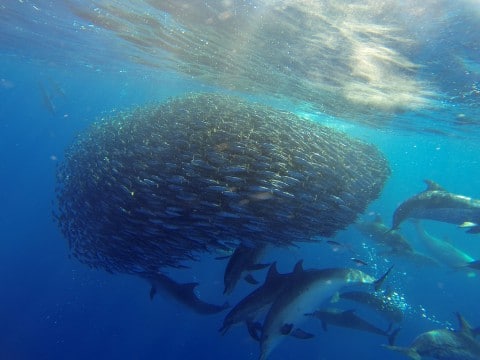
Behaviour:
Especially the young animals are very curious and playful. They quickly get to the boat, swim in the bow or stern wave or simply race with the boat. The groups with adults and babies are rather reserved and react less often. Spotted dolphins feed on fish and cephalopods both day and night. When they hunt, they gather their prey on the surface to limit their escape possibilities. There, shearwaters usually join them and participate in the banquet.
Occasionally, the sounds of spotted dolphins can be heard above water. In the sound recording they hear a typical sound spectrum with whistles and clicks. Towards the end of the recording the dolphins swim away and you can hear the engine of a nearby boat.
On our whale watching excursions we always carry an underwater microphone and when conditions are good we listen to the other world….
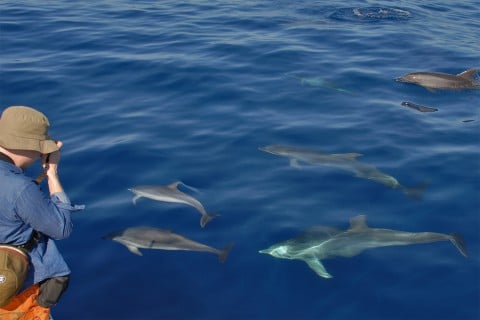
Distribution:
Spotted dolphins are very often seen off shore, usually in groups of 40-70 animals. As they are observed all year round, it is assumed that there is a constant population.
Threats:
Problems with fishing and water pollution are considered to be the biggest problems for spotted dolphins.
A study from 2018 recommends that the Canary Islands’ population of spotted dolphins be classified as “vulnerable” because of the relatively high levels of polychlorinated biphenyls (DDT and similar) found in their fatty tissue. The fatty tissue of 45% of the animals tested contained levels close to the limits.
“Contamination status by persistent organic pollutants of the Atlantic spotted dolphin (Stenella frontalis) at the metapopulation level”. Paula Mendez Fernandez et al. published 2018 in Elsevier.



